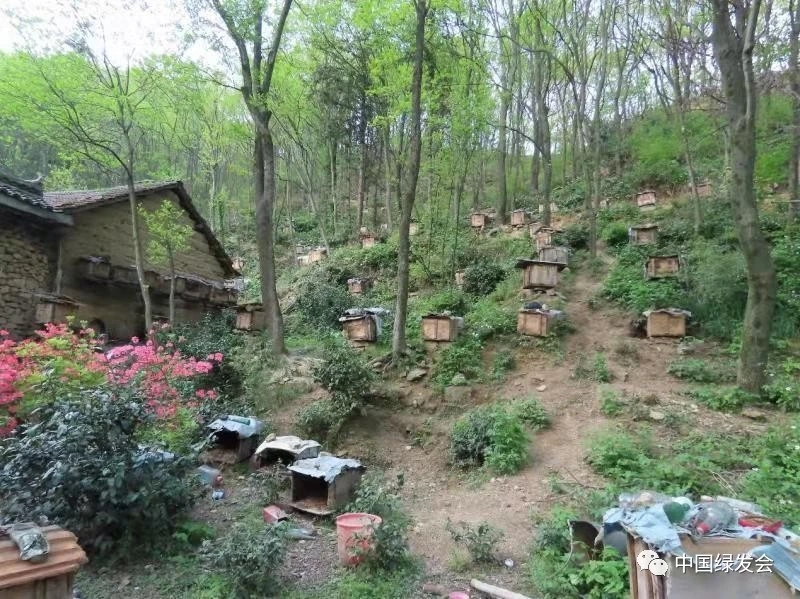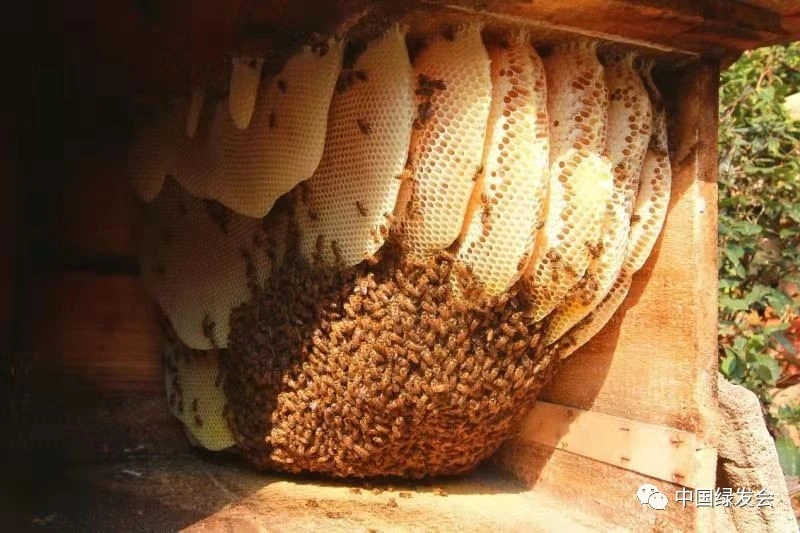On February 9th, the “Two Sessions” working group of CBCGDF held a meeting to address questions from the public. Mr. Huo Daishan shared his suggestions of the protection and sustainable use of Apis cerana.

1. Background:
In 2018, the Huaihe Guard, a social organization for environmental protection, applied to CBCGDF to establish the CBCGDF Conservation Area of Apis cerana in Tongbai Mountain, Henan Province, in response to the China's “Proposal of the CPC Central Committee on the Formulation of the Thirteenth Five-Year Plan for National Economic and Social Development" and the guiding thought of promoting the construction of ecological civilization. In the past three years, the site has been effectively built, but the protection of Apis cerana is still under strain.
Apis cerana is a subspecies of Eastern bees, which is included in the List of Terrestrial Wildlife of Important Ecological, Scientific and Social Value under State Protection. It is the main pollinator in the forest and traditional agriculture. It is good at collecting nectar. Moreover, its ability of resisting cold and enemies is far more than that of western bees. Apis cerana is very suitable for raising in mountainous areas of China, especially in alpine mountains.
Tongbai Mountain is the natural dividing line between north and south of China, with remarkable biodiversity. The natural colonies of wild Apis cerana have been found frequently, and human breeding enjoys a long history.

Today, the existential crises of Apis cerana mainly include the following aspects:
1. Man-made destruction
Wild Apis cerana mainly lives on stone cracks and some wild branches in the mountains. People usually collect honey with destruction and abuse of pesticide.
2. The destruction of forest
In recent years, the number of deforestation cases has decreased from more than 260 to 4-5 per year. However, there is still a small-scale deforestation, causing habitats and nectar source to reduce, which is unfavorable to the reproduction of Apis cerana.
3. Invasion of alien species
There are interaction and competition between Apis cerana and wasps and Italian bees. Italian bees can directly invade the nest of Apis cerana to kill the queen bee, causing a devastating blow. Because of the attack of these two kinds of bees, the population of Apis cerana decreased sharply.
4. Decrease of genetic diversity of germplasm
The decrease of bees affects the pollination of many kinds of plants, resulting in the decline of plant species and quantity and further aggravating the downward trend of the number of bees, leading to a sharp increase in the probability of inbreeding and genetic drift, and the degradation of germplasm, forming a vicious circle.
5. Weak protection consciousness
The local government lacked sufficient protection and diverted special allocation to develop Italian bees.
6. Lack of constant academic research
Farmers are not educated by specialists to breed and protect the bee.
It is recommended that:
1. Protection be prioritized, quantity and quality emphasized.
In order to develop wild populations, protected areas are set up in the existing protected areas where the natural populations of wild bees have been found (located in deep mountain caves, tree holes, cliffs). The strategy of protecting Apis cerana, driving vespid and limiting Italian bees should be adhered to. Technical training should be carried out to increase the amount of human breeding.
2. Ecological environment protection, publicity and protection be integrated.
We should continue to organize villager teams for forest protection, carry out voluntary mountain patrol, assist government departments and forest authorities in cracking down on forestry crimes. Technical training should be carried out to promote the population of bees. We should expand publicity and promote the development of bees and other types of forestry-related industries.
3. Cooperation and exchange of germplasm resources be promoted.
On the basis of existing protected areas (i.e., Tongbai Mountain), a high-quality germplasm resource bank of Apis cerana has been established scientifically. A research project has been set up to expand exchanges and cooperation between the deep mountains and the outside world. Moreover, we will promote the correct breeding method, expand the product value, increase its cultural and industrial output.
Translator/Yanjun
Original Chinese article
https://mp.weixin.qq.com/s/28azxRWFN7SKXPkbA7o3pw
Contribution
https://www.paypal.me/CBCGDFChina
http://www.cbcgdf.org/English/ConfirmDonaTion/0.html
